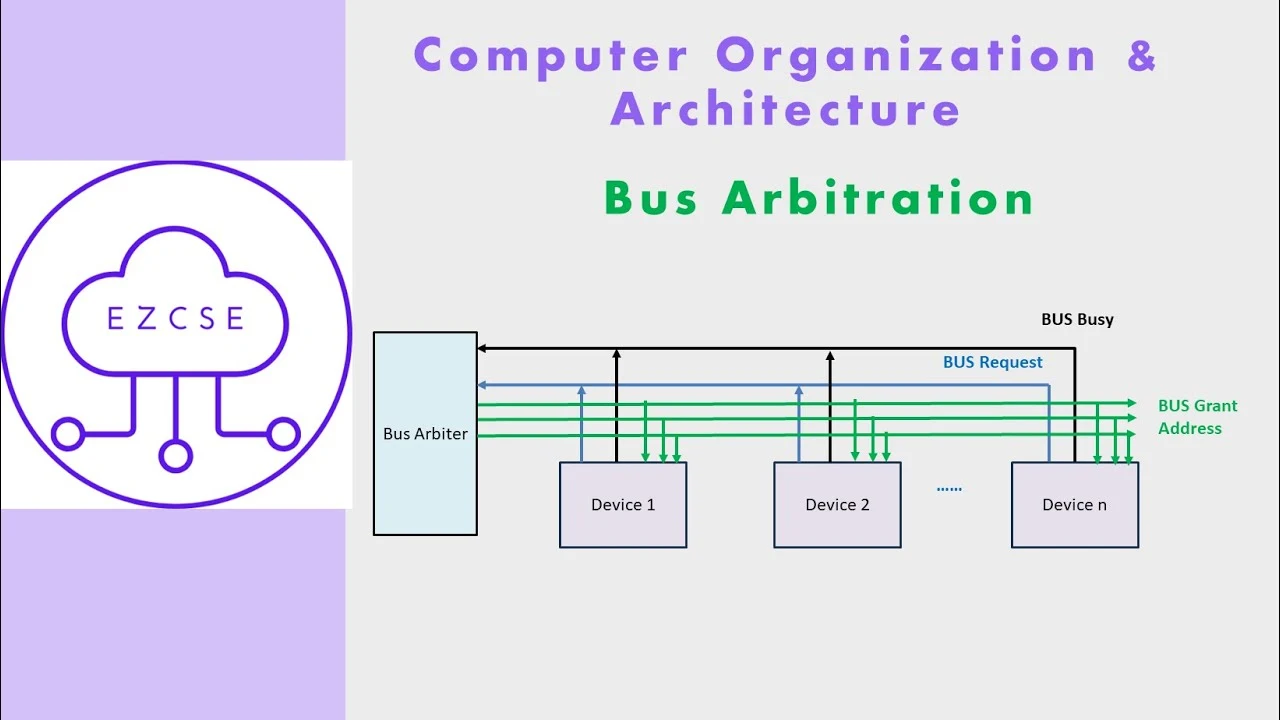
Bus Arbitration: Concept, Methods, and Importance in Computer Systems
In a computer system, the system bus is a common communication pathway that connects the CPU, memory, and I/O devices. Since multiple devices may need access to the bus simultaneously, a mechanism is required to decide which device gets control of the bus.
This mechanism is called Bus Arbitration. It ensures orderly and fair access to the bus while avoiding conflicts and ensuring efficient performance.
What is Bus Arbitration?
Bus Arbitration is the process of managing control of the system bus when multiple devices (CPU, DMA controller, I/O modules) request access simultaneously.
The device that wins control is called the bus master, and the process of selecting the bus master is called arbitration.
Need for Bus Arbitration
Prevents conflicts when multiple devices request the bus.
Ensures priority handling (e.g., CPU > DMA > I/O).
Provides fairness so that no device is starved.
Maintains system performance by reducing delays.
Types of Bus Arbitration
1. Centralized Arbitration
A single bus arbiter (controller) decides which device gets the bus.
Methods:
Daisy Chaining (Serial Arbitration) – Devices connected in a chain; nearest has highest priority.
Polling – Arbiter queries each device in order.
Independent Request Lines – Each device has a dedicated request line to the arbiter.
✅ Advantage: Simple design, clear priority.
❌ Disadvantage: Arbiter is a single point of failure.
2. Distributed Arbitration
No central arbiter. All devices participate in the decision collectively using a wired logic scheme.
Devices send requests and resolve priority among themselves.
Example: IEEE 796 Multibus, IEEE 488 GPIB.
✅ Advantage: No single point of failure, scalable.
❌ Disadvantage: More complex hardware.
Bus Arbitration Techniques
| Technique | How it Works | Priority Control | Example Use Case |
|---|---|---|---|
| Daisy Chaining | Serial pass of bus grant | Fixed priority (closest wins) | Simple microprocessors |
| Polling | Arbiter checks devices in sequence | Fixed order | Embedded systems |
| Independent Requests | Each device has separate line | Flexible priority by arbiter | Modern processors |
| Distributed | Devices decide collectively | Programmable | Advanced multiprocessor systems |
Priority in Bus Arbitration
Fixed Priority – Some devices always get higher priority (e.g., CPU > DMA > I/O).
Rotating Priority (Round Robin) – Priority shifts after each access → fairness.
Dynamic Priority – Priority changes based on device needs (e.g., waiting time, urgency).
Important Exam Pointers
Bus arbitration decides bus master when multiple requests occur.
Two main types → Centralized & Distributed.
Common centralized methods → Daisy Chaining, Polling, Independent Requests.
Priority schemes → Fixed, Rotating, Dynamic.
Key tradeoff = Simplicity vs Fairness vs Speed.
Conclusion
Bus Arbitration is an essential mechanism in computer systems to manage fair and efficient use of the system bus. Depending on the system size and complexity, designers choose between centralized or distributed arbitration methods, with different priority schemes.
For competitive exams, focus on:
Definition (decides bus master).
Types (centralized vs distributed).
Methods (daisy chaining, polling, independent lines, distributed logic).
Priority schemes (fixed, rotating, dynamic).